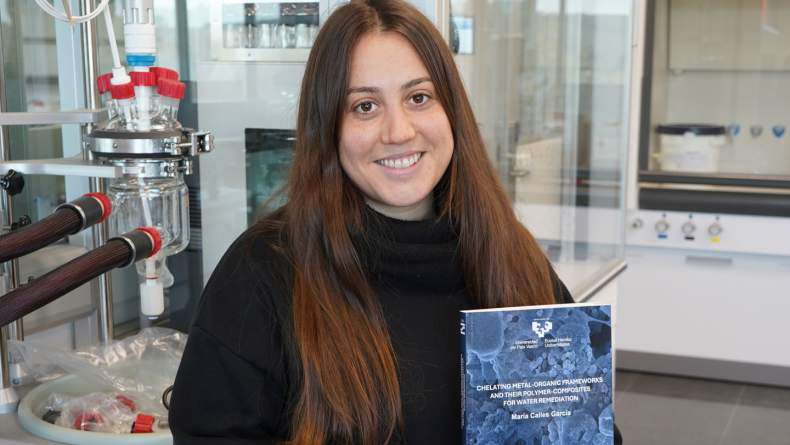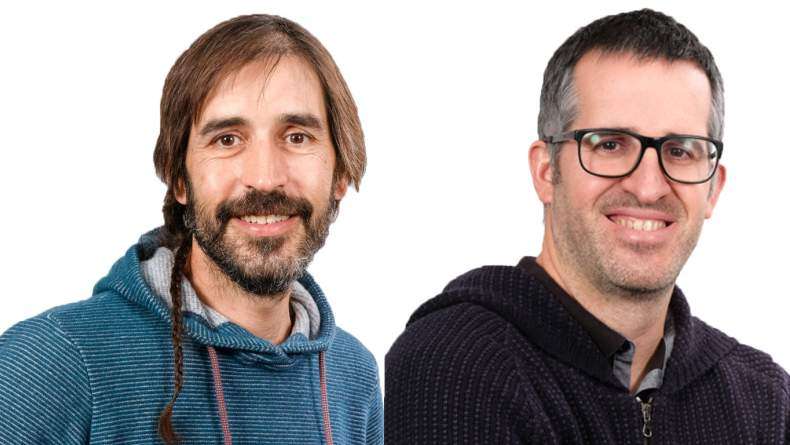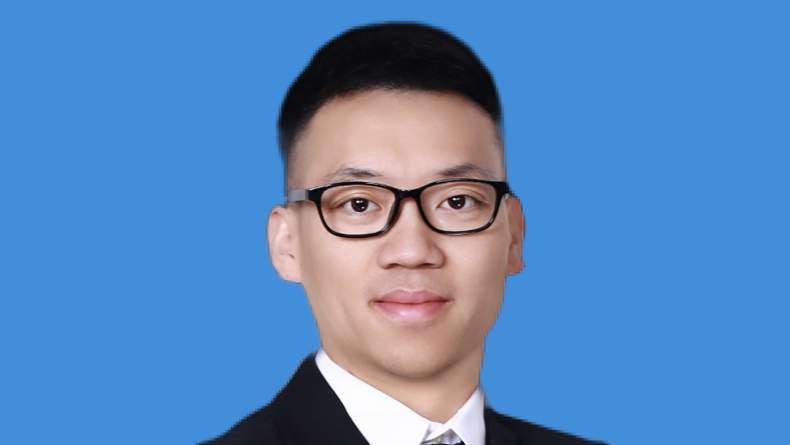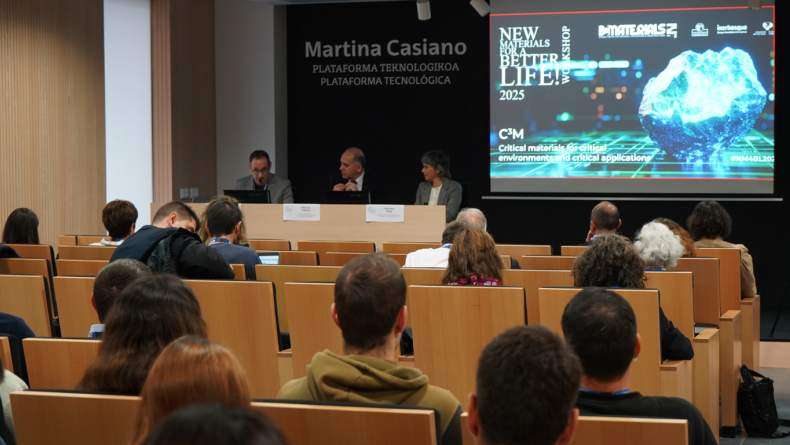BCMaterials Invited Talk: Sergey Kustov " “Microeddy Bordoni-type relaxation controls spin glass transitions?”

Next Thursday 18th BCMaterials and ZTF-FCT (UPV-EHU) present a Sergey Kustov Talk: “ Microeddy Bordoni-type relaxation controls spin glass transitions!?"
Seminario del Departamento de Electricidad y Electrónica 12:00 p.m.
 Acoustic techniques have not so far been used to study magnetic domain wall freezing effect typical for re-entrant spin glass transitions. Application of this method, which includes simultaneous measurements of linear microeddy and non-linear hysteretic magnetomechanical damping, to various materials having relatively low Curie temperatures (pure element – Dy, several types of ferromagnetic bulk metallic glasses, BMG), reveals the following regularities:
- a strong decrease of the long-range mobility of domain walls (or domain wall “freezing” effect) is controlled by a discovered linear microeddy current anelastic relaxation phenomenon;
- the microeddy relaxation is accompanied by a number of effects typical for the re-entrant spin glass transition as anomalies in magnetization, coercive force, magnetostriction, broken ergodicity;
- the microeddy current relaxation, which controls seemingly all (low field) magnetic properties is observed in completely different (in terms of crystallography and magnetism) materials, like pure Dy and BMGs;
- once the Curie temperature falls below the relaxation temperature, the re-entrant spin glass transition transforms into the spin glass one;
Based on the similarity of microeddy relaxation features in different ferromagnetic systems we propose that the relaxation is related to intrinsic properties of domain walls. We draw an analogy between the observed magnetic relaxation and the Bordoni anelastic relaxation due to the kink pair formation on a dislocation line.
One can assume that similar intrinsic properties of topological defects (domain walls) might control “glassy” transitions in other physical systems, like ferroelectrics and martensites
Acoustic techniques have not so far been used to study magnetic domain wall freezing effect typical for re-entrant spin glass transitions. Application of this method, which includes simultaneous measurements of linear microeddy and non-linear hysteretic magnetomechanical damping, to various materials having relatively low Curie temperatures (pure element – Dy, several types of ferromagnetic bulk metallic glasses, BMG), reveals the following regularities:
- a strong decrease of the long-range mobility of domain walls (or domain wall “freezing” effect) is controlled by a discovered linear microeddy current anelastic relaxation phenomenon;
- the microeddy relaxation is accompanied by a number of effects typical for the re-entrant spin glass transition as anomalies in magnetization, coercive force, magnetostriction, broken ergodicity;
- the microeddy current relaxation, which controls seemingly all (low field) magnetic properties is observed in completely different (in terms of crystallography and magnetism) materials, like pure Dy and BMGs;
- once the Curie temperature falls below the relaxation temperature, the re-entrant spin glass transition transforms into the spin glass one;
Based on the similarity of microeddy relaxation features in different ferromagnetic systems we propose that the relaxation is related to intrinsic properties of domain walls. We draw an analogy between the observed magnetic relaxation and the Bordoni anelastic relaxation due to the kink pair formation on a dislocation line.
One can assume that similar intrinsic properties of topological defects (domain walls) might control “glassy” transitions in other physical systems, like ferroelectrics and martensites
 Acoustic techniques have not so far been used to study magnetic domain wall freezing effect typical for re-entrant spin glass transitions. Application of this method, which includes simultaneous measurements of linear microeddy and non-linear hysteretic magnetomechanical damping, to various materials having relatively low Curie temperatures (pure element – Dy, several types of ferromagnetic bulk metallic glasses, BMG), reveals the following regularities:
- a strong decrease of the long-range mobility of domain walls (or domain wall “freezing” effect) is controlled by a discovered linear microeddy current anelastic relaxation phenomenon;
- the microeddy relaxation is accompanied by a number of effects typical for the re-entrant spin glass transition as anomalies in magnetization, coercive force, magnetostriction, broken ergodicity;
- the microeddy current relaxation, which controls seemingly all (low field) magnetic properties is observed in completely different (in terms of crystallography and magnetism) materials, like pure Dy and BMGs;
- once the Curie temperature falls below the relaxation temperature, the re-entrant spin glass transition transforms into the spin glass one;
Based on the similarity of microeddy relaxation features in different ferromagnetic systems we propose that the relaxation is related to intrinsic properties of domain walls. We draw an analogy between the observed magnetic relaxation and the Bordoni anelastic relaxation due to the kink pair formation on a dislocation line.
One can assume that similar intrinsic properties of topological defects (domain walls) might control “glassy” transitions in other physical systems, like ferroelectrics and martensites
Acoustic techniques have not so far been used to study magnetic domain wall freezing effect typical for re-entrant spin glass transitions. Application of this method, which includes simultaneous measurements of linear microeddy and non-linear hysteretic magnetomechanical damping, to various materials having relatively low Curie temperatures (pure element – Dy, several types of ferromagnetic bulk metallic glasses, BMG), reveals the following regularities:
- a strong decrease of the long-range mobility of domain walls (or domain wall “freezing” effect) is controlled by a discovered linear microeddy current anelastic relaxation phenomenon;
- the microeddy relaxation is accompanied by a number of effects typical for the re-entrant spin glass transition as anomalies in magnetization, coercive force, magnetostriction, broken ergodicity;
- the microeddy current relaxation, which controls seemingly all (low field) magnetic properties is observed in completely different (in terms of crystallography and magnetism) materials, like pure Dy and BMGs;
- once the Curie temperature falls below the relaxation temperature, the re-entrant spin glass transition transforms into the spin glass one;
Based on the similarity of microeddy relaxation features in different ferromagnetic systems we propose that the relaxation is related to intrinsic properties of domain walls. We draw an analogy between the observed magnetic relaxation and the Bordoni anelastic relaxation due to the kink pair formation on a dislocation line.
One can assume that similar intrinsic properties of topological defects (domain walls) might control “glassy” transitions in other physical systems, like ferroelectrics and martensitesRelated news
María Calles, New Doctor of BCMaterials
We would like to congratulate María Calles García for obtaining her PhDs in Materials Science and Technology from the UPV/EHU. On December 4 made a brilliant defense of her thesis titled ‘Chelating…Invited Talk with Barcelona Microelectronics Institute’s researchers (December 3)
On December 3 at 12:00 PM, in the Martina Casiano Auditorium in Leioa, BCMaterials will host senior researchers Antón Guimerà and Xavier Illa from the Barcelona Microelectronics Institute (IMB-CNM,…Invited Talk by Liu Yao on Lithium-Metal Batteries (December 2)
Next Monday, December 2, Liu Yao, professor at the Shanghai Institute of Applied Physics, will give an invited lecture at BCMaterials entitled ‘Li-Metal Batteries: From Liquid to Solid-State’. The…Success of BCMaterials’ Annual Workshop on Critical Materials
The 2025 edition of BCMaterials’ annual workshop gathered nearly one hundred participants on November 19 in Leioa to review the latest advances and discuss critical materials, their applications, and…



